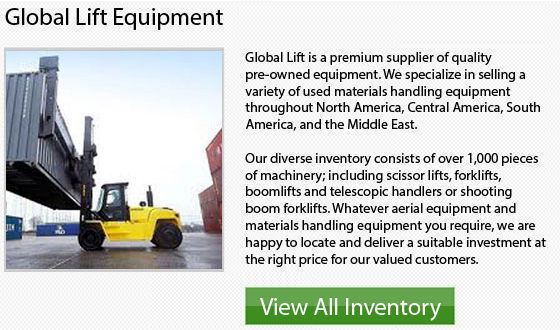Used Caterpillar Telehandler Forklifts Rialto
A telescopic handler is like a forklift. It has a single telescopic boom that extends both upwards and forwards from the truck, and a counterweight situated within the back. It functions more like a crane than a forklift. The boom can be equipped with a variety of attachments. The most common attachment is pallet forks, but the operator could also attach a bucket, muck grab or lift table. Also known as a telehandler, this particular kind of machinery is commonly utilized in agriculture and industry.
A telehandler is often used to transport loads to and from places which will be difficult for a conventional forklift to access. Telehandlers are commonly utilized to unload pallets from within a trailer. They are also more practical than a crane for lifting loads onto rooftops and other high locations.
The telehandler has one major limitation. Even with counterweights at the rear, the weight-bearing boom can cause the vehicle to destabilize as it extends. Hence, the lifting capacity decreases when the distance between the front of the wheels and the centre of the load increases.
The Matbro company developed telehandlers in England. Their design was based largely on articulated cross country forklifts utilized in forestry. Early models consisted of a driver's cab on the back section and a centrally mounted boom on the front, but nowadays the most common design has a rigid chassis along with a side cab and rear mounted boom.
- Used Jungheinrich Double Reach Forklifts Rialto
Forklift Material Handling
Companies could experience changes in their material handling needs eventually. Factors such as expanded geographical coverage, more SKUs, and need to lower inventories demand process review to maintain optimal production. There have... More
- Used Hyundai LP Forklifts Rialto
Hyundai LPG Forklift Trucks
Providing sophisticated fuel induction technology which greatly saves on fuel consumption and reduces harmful emissions is the Hyundai LPG forklift series. With lower levels of emissions and pollution, forklifts that utilize... More
- Used Crown Narrow Aisle Forklifts Rialto
Very Narrow-Aisle Turret Trucks
In the lift truck business, Crown has developed an innovate line of heavy-duty turret trucks, establishing a new level of standard. Crown has developed the fastest lift speeds and the fastest... More
- Used Mitsubishi Propane Forklifts Rialto
The forklift has been around ever since the early part of the 1920's. Ever since its inception, the lift truck has become an indispensable machinery for the materials handling industry.
Sometimes referred to as forklifts,... More
- Used Nissan Counterbalance Forklifts Rialto
Counterbalance lift trucks are basically forklifts which are designed with counterweight at the back of the machine. The counterweight works to balance the weight which the tines are carrying at the front of the cargo.... More
